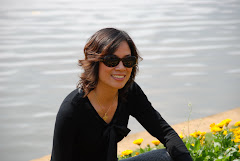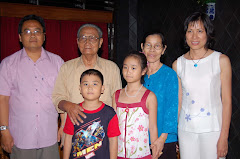


The Church of the Multiplication of the Loaves and Fishes (also known as the Church of the Multiplication) is a church in Tabgha on the northwest shore of the Sea of Galilee. Tabgha an Arabic corruption of the Greek name Heptapegon (Seven Springs) is the traditional site of the Miracle of the Multiplication of the Loaves and the Fishes. The church is modern but stands on the site of 4th and 5th-century churches. It preserves a splendid early Christian mosaic as well as the traditional stone on which the miraculous meal was laid.
The miraculous feeding of five thousand people is described in Mark 6:30-44, just before Jesus walks on water. The Gospel account of the loaves and fishes does not specify where it took place; only that it was in a "remote place" (6:32,35) on the shores of Galilee.
According to Mark's account, Jesus and his disciples had gone out in a boat to this remote place for some peace and quiet, but the crowds ran ahead "from all the towns" and met him when he landed. By then it was dinnertime and they were not in a village where food could easily be bought, so Jesus fed them all by miraculously multiplying his disciples' five loaves and two fishes. Then Jesus directed them to have all the people sit down in groups on the green grass. So they sat down in groups of hundreds and fifties. Taking the five loaves and the two fish and looking up to heaven, he gave thanks and broke the loaves.Then he gave them to his disciples to set before the people. He also divided the two fish among them all. They all ate and were satisfied, and the disciples picked up twelve basketfuls of broken pieces of bread and fish. The number of the men who had eaten was five thousand. (Mark 6:40-44)
According to Mark's account, Jesus and his disciples had gone out in a boat to this remote place for some peace and quiet, but the crowds ran ahead "from all the towns" and met him when he landed. By then it was dinnertime and they were not in a village where food could easily be bought, so Jesus fed them all by miraculously multiplying his disciples' five loaves and two fishes. Then Jesus directed them to have all the people sit down in groups on the green grass. So they sat down in groups of hundreds and fifties. Taking the five loaves and the two fish and looking up to heaven, he gave thanks and broke the loaves.Then he gave them to his disciples to set before the people. He also divided the two fish among them all. They all ate and were satisfied, and the disciples picked up twelve basketfuls of broken pieces of bread and fish. The number of the men who had eaten was five thousand. (Mark 6:40-44)
The earliest building at Tabgha was a small chapel (18 x 9.6 m) from the 4th century CE; only a part of its foundations was uncovered. This was probably the shrine described by the pilgrim Egeria at the end of the 4th century: In the same place (not far from Capernaum) facing the Sea of Galilee is a well watered land in which lush grasses grow, with numerous trees and palms. Nearby are seven springs which provide abundant water. In this fruitful garden Jesus fed five thousand people with five loaves of bread and two fish. The stone upon which the Master placed the bread became an altar. The many pilgrims to the site broke off pieces of it as a cure for their ailments.
During the fifth century, a large monastery and a church decorated with exquisite mosaic floors was built on the site. The complex covered an area of 56 x 33 m. and included courtyards and many rooms used as workshops for a variety of crafts as well as for lodging for the monks and the many pilgrims who came to visit.
The monastery and church at Tabgha were destroyed in the 7th century, probably during the Arab conquest of the country, and buried beneath a thick layer of silt and stones. In the 1980s, after excavation, the church was restored to its Byzantine form, incorporating portions of the original mosaics.
The basilical church is divided by two rows of columns into a central hall and two aisles. In the eastern wall is a semi-circular apse and on either side of it, rooms for the officiating clergy. A raised platform in front of the apse is surrounded by a chancel screen and at its center an untrimmed stone was preserved under the altar. This is the traditional site of the miracle of the Loaves and the Fishes. A mosaic depicting a basket of bread flanked by two fish was found behind the untrimmed stone. It was added in the 6th century, suggesting the stones significance; today it is displayed in front of the altar.
The church is famous for its mosaics, unique among Byzantine churches in the Holy Land. Most of the floor of the church is decorated in ordinary geometric patterns. The unique principal mosaics decorate both sides of the transept. Particularly well preserved is the one on the left of the platform, a square carpet (6.5 x 5.5 m.) bordered with a band of lotus flowers.
The carpets are decorated with multi-colored representations of the local flora and fauna, interspersed with several buildings. The flowers and animals, mainly birds, are so naturalistically depicted that it is possible to identify lotus, oleander and lily; also duck, snipe, heron, goose, dove, swan, cormorant, flamingo and stork. A tower marked with bands bearing Greek letters, probably for measuring the water level of the Sea of Galilee (known as a "nilometer"), is also depicted.
The church belongs to the Order of the Benedictines and is open to visitors. Today, as in Byzantine times, large numbers of pilgrims come to visit.



No comments:
Post a Comment
Your comments here